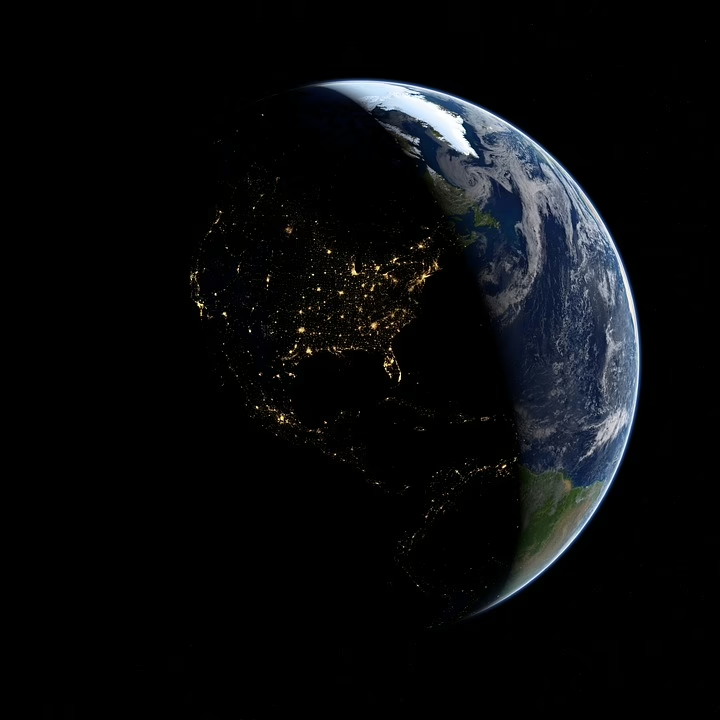From Your Backyard: A Stargazer’s Guide to Nightly Planetary Sightings
Stargazing has captivated humanity for millennia. From ancient astronomers mapping the night sky to modern-day astrophysicists, the stars and planets above have inspired wonder and curiosity. For those who seek to explore the cosmos without leaving the comfort of their own backyard, this guide serves as an invitation to embark on a journey through the night sky, focusing specifically on the visible planets.
The Basics of Stargazing
Before diving into specific planetary sightings, it is important to understand the fundamental aspects of stargazing. Familiarizing oneself with the essential tools and knowledge can greatly enhance the experience of identifying celestial bodies.
Tools for Stargazing
-
Naked Eye: For many amateur stargazers, simply using the naked eye is sufficient. Most planets, such as Venus, Mars, and Jupiter, can be easily identified without any optical aids.
-
Binoculars: Binoculars can greatly enhance the stargazing experience. They provide a wider field of view than telescopes and are ideal for beginners. A pair with a magnification of 7x to 10x works well for planetary observation.
-
Telescopes: While more advanced, telescopes offer the most detailed views of planets. For planetary observation, a telescope with a diameter of at least 60mm is generally recommended.
Learning the Night Sky
It’s vital to have a foundational understanding of the celestial sphere. One way to begin is by learning to identify constellations. Tools like star charts or mobile apps can help newcomers visualize and familiarize themselves with the layout of the night sky.
Planetary Sightings
Mercury
Visibility: Mercury is often referred to as the “elusive planet” due to its proximity to the Sun. It is best viewed during dawn or dusk when it is just above the horizon.
Best Viewing Times: The planet typically becomes visible shortly after sunset or before sunrise. Observing periods occur roughly every 116 days, and it’s beneficial to check astronomical calendars to identify optimal viewing opportunities.
Venus
Visibility: Also known as the “Evening Star” or “Morning Star,” Venus is one of the brightest objects in the night sky, second only to the Moon. Its bright white appearance makes it easily identifiable.
Best Viewing Times: Venus typically becomes visible shortly after sunset or just before sunrise. The planet has varying periods of visibility; thus, it’s essential to track its position in the sky over weeks or months.
Mars
Visibility: The “Red Planet” is best known for its reddish appearance caused by iron oxide on its surface. Mars can be seen with the naked eye, although its best features are appreciated through binoculars or telescopes.
Best Viewing Times: Mars has a roughly 26-month orbital period, meaning its visibility shifts over time. Observations are optimal during its opposition, which occurs approximately every 26 months. Tools like Stellarium can alert stargazers to when these events occur.
Jupiter
Visibility: The largest planet in our solar system, Jupiter is an outgoing, bright object with a distinct appearance. Its four largest moons—Io, Europa, Ganymede, and Callisto—are visible with binoculars and offer an exciting target for observation.
Best Viewing Times: Jupiter is best observed during opposition, which occurs every 13 months, making it especially bright and easy to find in the night sky.
Saturn
Visibility: Known for its stunning rings, Saturn is another giant planet that can be spotted with the naked eye. However, the rings become visible only through binoculars or telescopes.
Best Viewing Times: Much like Jupiter, Saturn’s opposition occurs every 29.5 years. Knowing when that time is can allow stargazers to witness the planet at its most beautiful.
Uranus and Neptune
Visibility: As the “ice giants” of our solar system, Uranus and Neptune are more challenging to spot due to their distance from the Sun and our planet. They require a good telescope to be seen clearly.
Best Viewing Times: Uranus can be spotted during specific times when it is in the vicinity of brighter stars, whereas Neptune requires more precise tracking, usually around its opposition every 10-12 months.
Monthly Stargazing Tips
The following sections will organize the best times to observe specific planets month by month.
January
- Venus: Visible shortly after sunset.
- Mars: Low in the southwest sky.
February
- Mercury: Appearing briefly after sunset.
- Venus: Continues to shine brightly.
March
- Jupiter: Begins to rise later in the evening.
- Mars: Low on the horizon.
April
- Saturn: Becomes visible in the pre-dawn sky.
- Venus: Still prominent in the evening.
May
- Mercury: Favorable viewing early in the month.
- Jupiter and Saturn: Rises earlier.
June
- Mars: Best viewing as it climbs higher in the night sky.
- Venus and Jupiter: Visible in the evening twilight.
July
- Saturn: At its best, clearly visible.
- Neptune: Viewable with a telescope.
August
- Uranus: Comes into better visibility.
- Jupiter: Bright and easy to spot.
September
- Venus: Appears for a good portion of the evening.
- Mars: Darker skies make it easier to spot.
October
- Mercury: Another favorable opportunity to observe the planet.
- Jupiter: Remains prominent.
November
- Saturn: Clear visibility continues.
- Uranus: Reach its best during the fall months.
December
- Mars: Visible in the evening sky.
- Jupiter: Offers excellent viewing opportunities.
The Effects of Light Pollution
Light pollution poses a significant challenge to stargazers, often drowning out the natural beauty of celestial bodies. Urban areas with excessive artificial light can hinder visibility, causing even bright planets to become difficult to spot. Here are a few strategies to mitigate light pollution:
-
Seek Darker Locations: Travel away from urban centers to rural areas where the skies are clearer.
-
Observe During Moon Phases: The absence of a full moon creates darker skies, making planets more visible.
-
Use Apps: Modern stargazing apps can help identify the best locations to view planets based on light pollution levels in your area.
Conclusion
Stargazing, particularly focusing on planetary sightings, offers a unique and inspiring connection to the cosmos. Armed with knowledge of the planets, the right tools, and a little patience, anyone can embark on an exciting journey through the night sky from their own backyard. To truly appreciate the beauty above, it’s crucial to track the movements and visibility of each planet, making it an engaging experience year-round.
References
- Rybak, A. (2022). Stargazing: A Beginner’s Guide. New York: Astronomy Publishing.
- Johnson, L. W. (2021). The Universe in Your Backyard: Planetary Observations. Chicago: Celestial Books.
- Lee, C. (2020). Light Pollution and Its Effects on Stargazing. Journal of Astronomy, 45(2), 100-112.
- NASA. (2023). Planetary Positions and Visibility. Retrieved from NASA.gov
- Stellarium. (2023). Stellarium Web: The Free Stargazing Software. Retrieved from Stellarium.org
With these guidelines in hand, grab a blanket, lie back, and unlock the secrets of the night sky, one planet at a time. Happy stargazing!

























Add Comment